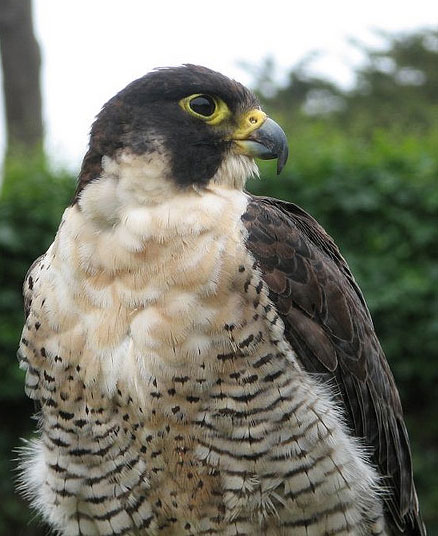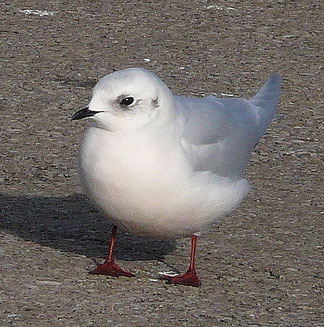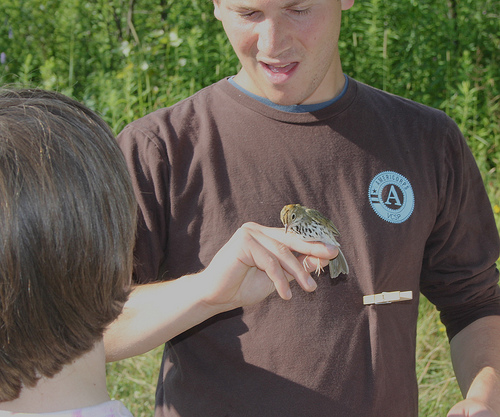Here is the next batch of stories prompted by Gerry Cooperman’s post on MASSBIRD list serve:
David’s interest was kick-started by a rare gull in Newburyport:
Today, I was birding with Dennis, my twin brother, and Fay Vale at Plum Island. Fay mentioned that the person who “sparked” her was Herman Weissberg, who worked at the same company that she did. Many “old-timers” will remember Herman (the Brown Thrasher), a fixture at Plum Island. I’ve just realized as I start writing this, that I can claim Herman as a catalyst for my birding. First, a childhood memory before I get to Herman again.
I have always been interested in nature, along with my brother, Dennis. We did everything together, including birding. My first bird memory was in the 1950’s when Dennis and I were walking to the Hosmer Elementary School in Watertown. Feeding in a small berry-producing tree were a group of Cedar Waxwings and we marveled at their understated beauty. We noted that there were birds out there besides starlings, pigeons, and sparrows. As the years went by, we did see new birds, without binoculars, and knew robins, jays, crows, etc.
Ross’s Gulls were unknown in the continental United States until an individual appeared in Newburyport, Massachusetts in 1975. Now sightings occur nearly every year. photo by Seabamirum
In 1975 something happened that set us on a road of discovery and adventure that I never could have imagined at the time. Here’s where Herman Weissberg comes in. Herman and Phil Parsons found a Ross’s Gull in Newburyport harbor that January. Of course, Dennis and I would never had known about it if it wasn’t such a big thing. But it was a big thing, and the sighting made the newspaper and the television news programs. We watched in awe as we saw people coming from all over the country to see the Ross’s Gull. Now we knew that the world of birding existed and that world was something we wanted to do. We never saw that Ross’s Gull, but did catch up with it in Churchill, Manitoba, thanks to Bill Drummond. Later that year, we bought binoculars and in July went on our first birding excursion. We couldn’t get enough of these gorgeous, musical, fantastic birds.
Sarah’s (CT) story is not about her (She wrote that she had so many sparks of her own, thanks to her father!), but rather of passing along the torch to the next generation.
I teach middle school science in a large, 3-story school with a flat gravel roof and resident flock of pigeons. We are located just a few miles west of the Traveler’s Tower in Hartford. We have been VERY lucky that the pair of Hartford peregrines has, for many years, chosen to hunt at our school. I’ve taught the students to watch the behaviors of the pigeon flock, and they’ve come to understand that when the flock is panicked, something is chasing them. I keep a box of old binoculars by the windows in case we need them, and am pleased to say that my students don’t hesitate to jump out of their chairs, race to the windows, and grab the binoculars when the peregrines flash past.
I don’t mind losing some classroom time now and then to build their love of birds and understanding of nature (which IS part of the curriculum!!!). I’ll never forget the day when an entire class rushed in from down the hall to report that a peregrine had grabbed a pigeon not 3′ outside the windows of the Spanish class — they were SO excited! The Spanish teacher thought it was extraordinary and loved their enthusiasm, and then added Spanish birding words to their vocabulary. It is wonderful to see students develop their observation skills and share them with each other and their families. Many of my students and their families have come back to me in later years to report that their introduction to birds in my classroom helped them see nature with new eyes, setting them on a path of loving nature, science, and birds. I hope that someday a few of them might remember our school birds as that first spark. Go peregrines!

Perigrine Falcons are spectacular birds that were virtually eradicated from eastern North America by pesticide poisoning in the middle 20th century. Their recovery is a great success story. photo by Just chaos
Gian is a “Hatch-year birder” who was hooked by Perigrine Falcons:
On a cold February afternoon, while driving with my son to pick up his sister at a birthday party, we were blown away by two Peregrine Falcons engaging in an aerobatic display that would put fighter pilots to shame.
The mythical Peregrine, the fastest animal in the world, was no longer the stuff of books or “Wild Kratts” or YouTube, but a REAL creature in our world. We watched for a brief ten seconds before the traffic light changed, but what an indelible image that brief encounter left etched on my being.
That was this February, and as a hatch-year birder, I have stumbled, bumbled, and lucked myself along, devouring field guides, meeting some wonderful folks in the field, picking up great tips from Massbird, and studying eBird’s maps and graphs and checklists.
It’s been a wonderful start to this journey, and I feel lucky whenever I venture outside and hear a familiar call, spot a flash of color flitting through the trees, or look up to see the gulls riding invisible waves of wind. And the exhilaration of seeing something new, well that’s beyond description.
Bird banding was one of the big influences on Glenn:
My first memory of a single bird was a Ruby-throated Hummingbird at a window flower box seen from inside the house of my step-grandfather’s house in (Middle) West Pubnico Nova Scotia. I think I would have been around 8.
I had a sixth grade writing assignment which was to write about something different. My mother’s brother, Herman, would come over every Monday evening for dinner. I announced the assignment at the dinner table and afterwards he told me of the banding operation at Manomet. He was volunteering with the project. I took note(s), wrote my paper, got an A. When I told him this he asked if I would like to actually see of what I wrote. I said yes.
The date is October 8, 1968. This is the day I decided I REALLY liked birds. Herman picked me up at Braintree for what was to be a morning at Manomet. Note this is only a banding operation at this point. Manomet Bird Observatory was incorporated in 1969. I met people whose names I forgot. What I did not forget was the birds which were handed to me for release. I had no idea of the variety and delicate plumage(s) and sizes and shapes. The one bird I recall vividly was the Black-throated Blue Warbler. Some day I will obtain the actual records of the day, but my memory wants to say there were lots. I was moved by how fragile these living things are and felt odd I could actually control the destiny of such a living thing. I took care in my duty holding gently and opening the hand slowly. Some would not realize they were free, so I get them a little boost. At 5:00 p.m. Herman told me we had to leave. Why I asked? Because the banding day was over.
The person who handed me some, if not most, of these birds? Kathleen “Betty” Anderson. (Read her “spark” story here.)
Initial Post Responses: Part 1 Part 2 Part 3 Part 4 Part 5
Join those who comment on what spark set them on their birding journey? Tell us about it with a comment below. You should sign up by RSS feed or via email to have future “spark” articles sent to you. Thanks
Discover more from Vermont Birder
Subscribe to get the latest posts sent to your email.



Pingback: What Sparked My Interest in Birding – Part 7
Pingback: What Sparked My Interest in Birding – Part 8